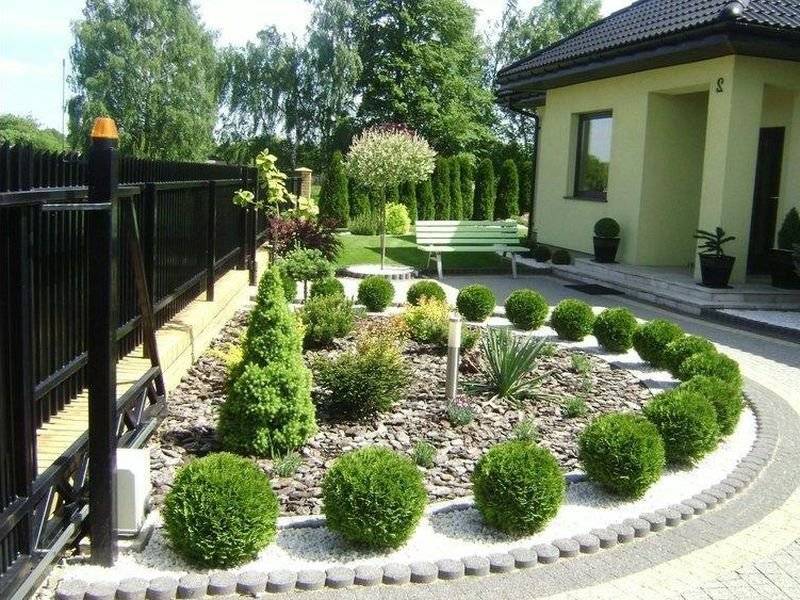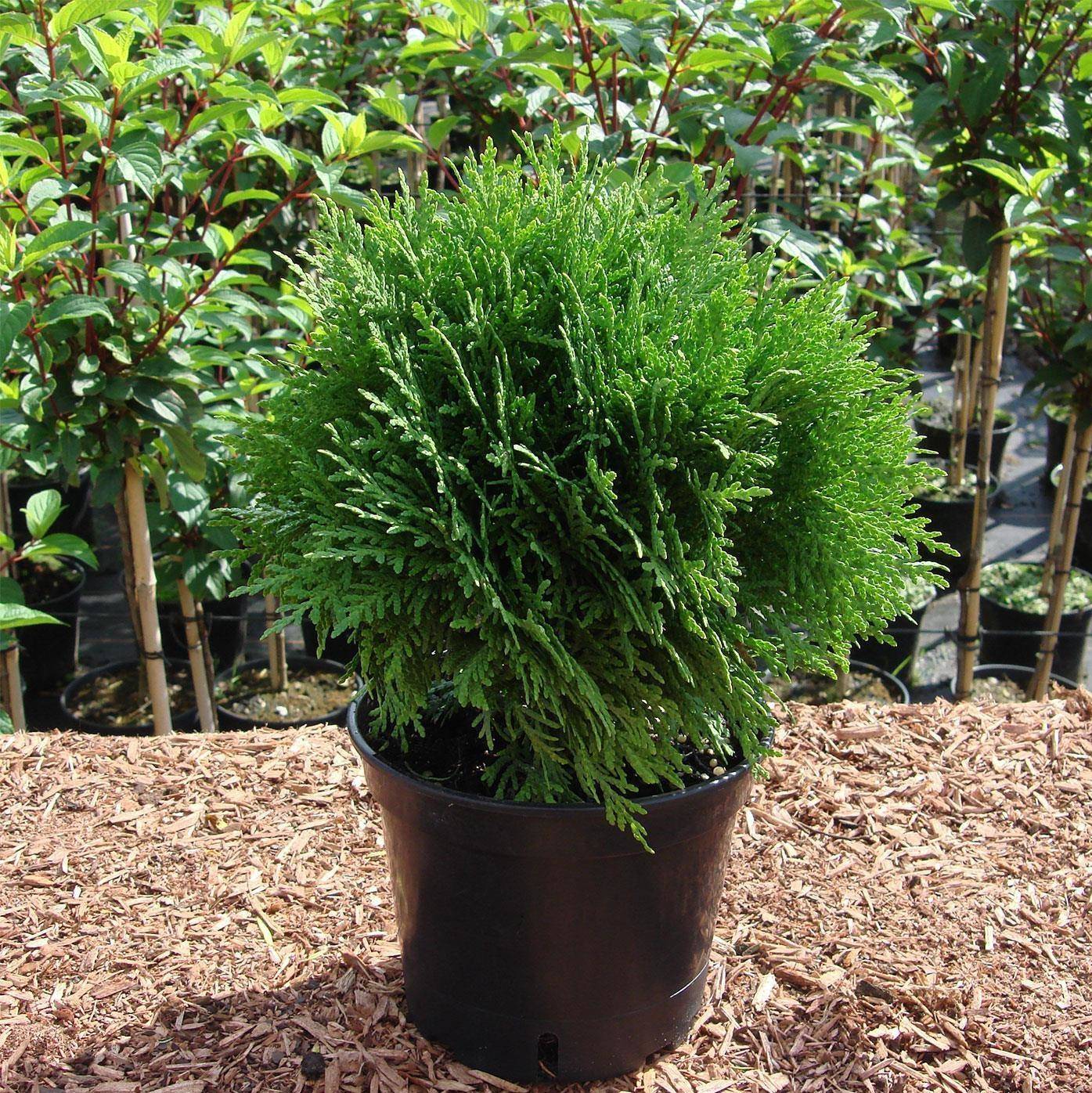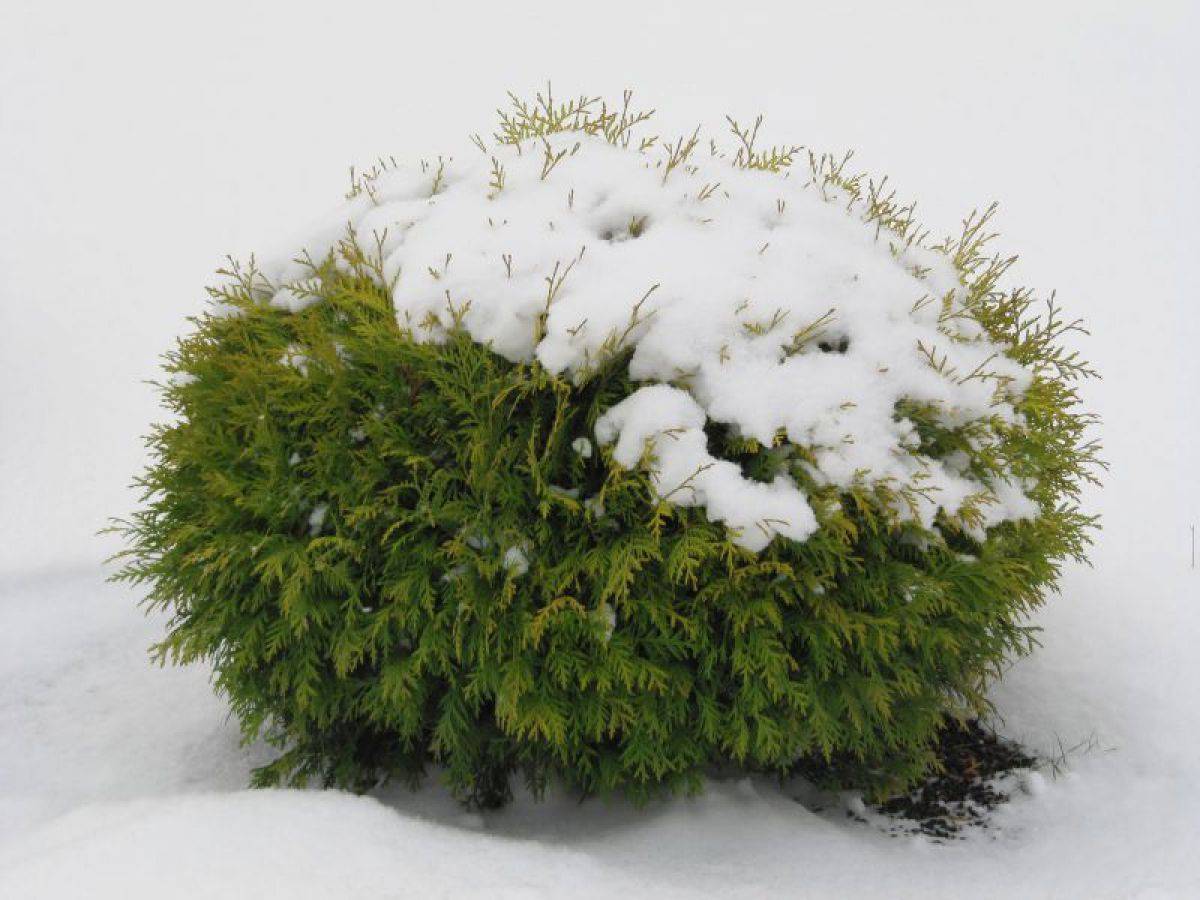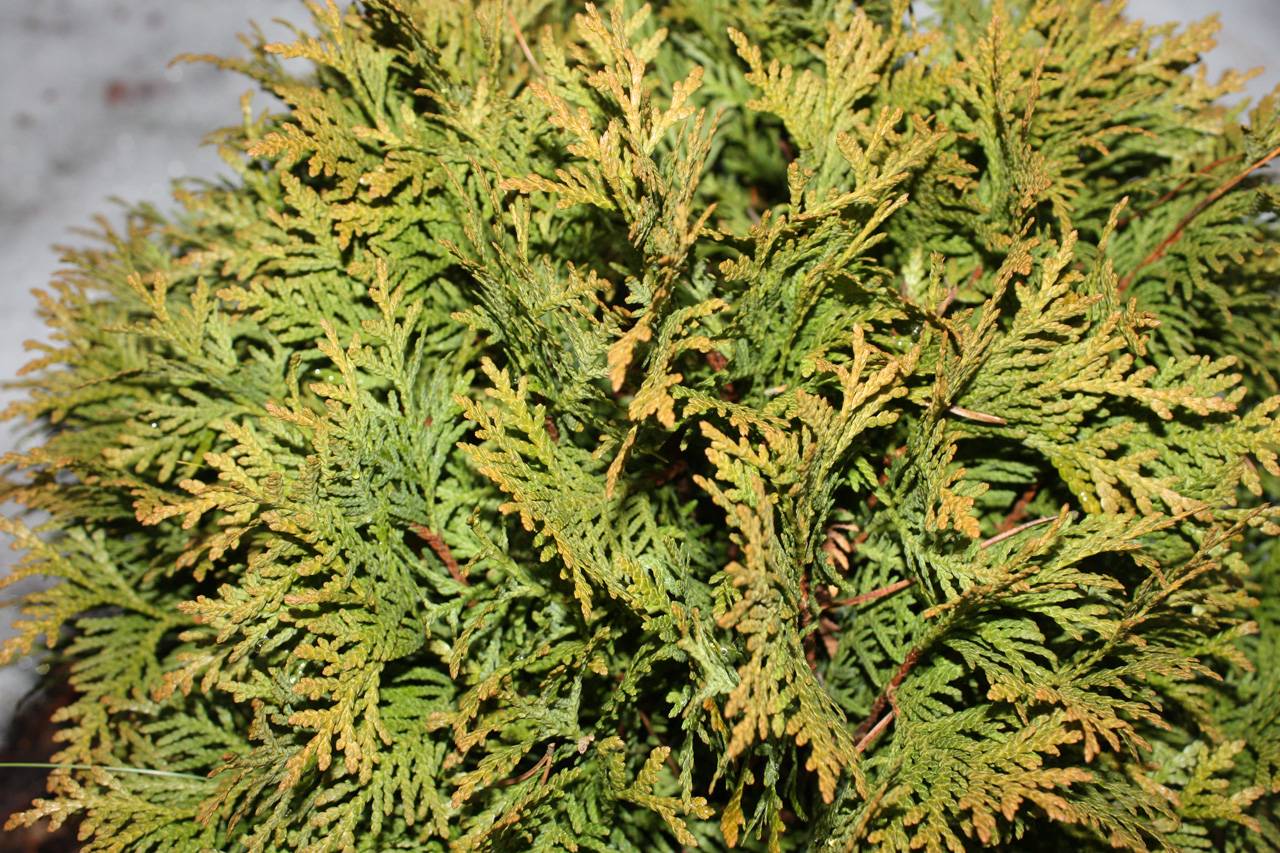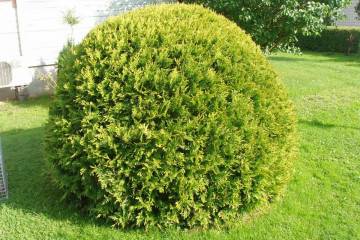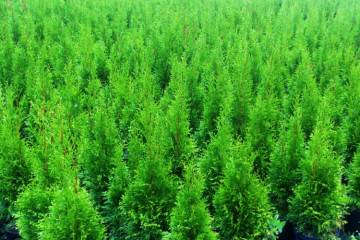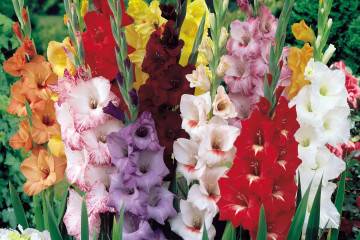Thuja Danica (Danica) spherical - description
Content:
Thuja Western Danica is considered one of the most popular varieties. Gardeners love it because of its miniature size and presentable appearance. The shrub stands out among all the others with a dense rounded crown, ideally fits into any landscape design. He will always find a place on any site.
Description and characteristics
Thuja Danica is a dwarf species of coniferous shrub. It is used to create green borders and rocky gardens.
Thuja Danica belongs to the gymnosperm family. A coniferous tree grows about 60 cm in height and up to 1 meter in diameter. The crown is spherical, the needles are light green. With changes in shade, the plant signals a lack of moisture, nutrition, or disease. The needles of this variety are soft, densely filling the spherical crown, and shine in the sun. The needles of the needles are directed upwards. Cones are round, about 6 millimeters long, brown in color.
Today thuja Western Danica is of 2 types:
- Thuja Danica Aureya - has good frost resistance. This type of shrub should be planted in sun-drenched areas, otherwise the corners will have a dark shade.
- Thuja spherical Danica - is large. The color of the needles varies with food and lighting.
Use in landscape design
In landscape design, thuja Danica is used for decoration of decorative compositions and decoration of plots. When planting these shrubs, they form curbs and form hedges.
The shrub is miniature and is therefore often planted in containers to decorate balconies, terraces and loggias.
History of appearance
The thuja variety Occidentalis Danica was bred in 1948 by a Danish breeder. After hatching, he gave the name to the shrub in honor of his country.
Tuya Golden Danica: planting and care
The further development of the shrub will completely depend on the correct planting and subsequent care of the shrub. Therefore, this stage should be given special attention.
How to choose one when buying
When choosing seedlings, be sure to pay attention to the following nuances and features:
- the needles of seedlings should be deep green and have young growths;
- the seedling must have a well-developed root system;
- preference should be given to those seedlings in which the bark is without cracks and with a smooth surface;
- the needles inside should not be yellow or rusty;
- it is best to purchase seedlings that are no more than 4-5 years old;
- it is best if the plant is grafted and treated against pests and diseases.
All of the above recommendations must be taken into account. After all, only from a healthy seedling a beautiful tree can grow.
Site selection and soil preparation
Gardeners recommend planting a plant in the spring. In this case, the planting pit should be prepared in the fall. The volume of the planting pit should be several times the volume of the container. Before planting a plant in open ground, you need to pour humus, peat and garden soil on the bottom in equal shares.Also, mineral fertilizer is required to be applied to the soil, depending on the size of the pit.
As for the choice of location, the variety tolerates shading well. It is not recommended to plant thuja in the open sun, as young shoots can get burned.
Features of correct planting and transplanting a plant
Planting thuja at home is very simple. To do this, follow these steps:
- Carefully remove the bush from the container and place the plant on fertile soil.
- Place the base of the bush so that it is slightly above ground level.
- Under the roots, it is required to compact the earth and water the plant with plenty of water.
- After complete absorption, the surface of the soil should be covered with grass and peat.
In some cases, gardeners use black textiles, which are spread on the soil surface, cross-shaped cuts are made in it, and a bush is planted there.
Thuja care during the growing season
Despite the fact that thuja Danica, according to the description, is an unpretentious plant, it should be looked after. In the summer, it is necessary to provide the plant with regular watering. Sprinkling of needles can be used; this procedure should be carried out at sunset.
The space under mature bushes must be cleared of needles and the mulch must be systematically renewed after watering.
Top dressing
The process of fertilizing thuja should be approached responsibly, since overfeeding may decrease winter hardiness, as well as other negative consequences. Top dressing is carried out twice a season. In the spring, plants are fertilized with mineral fertilizers, and in the fall, they are fertilized with potash agents.
Features of winter care for thuja Danica
At the end of autumn, it is recommended to cover the shrub with burlap and tie it with tape so that it does not suffer from snow and icing. From the end of February to March, it is necessary to regularly crush the snow from the plant so that the sun's rays do not cause a burn on wet needles.
Pruning
Danica does not need a formative pruning of thuja. But despite this, it is necessary to systematically remove old, dead and improperly overgrown branches from the plant.
A sanitary haircut is carried out in the spring. At this time, dry branches broken by snow or wind are removed, and the needles are sheared, which is dried up by the spring sun.
Reproduction of thuja Danica
Propagation by cuttings is considered a reliable breeding method for this variety. To do this, in the fall, shoots about 50 cm in size are torn from the middle of the bush, so that a little tree bark remains on them. After that, the lower branches are removed from them and planted in pre-prepared pots with soil. Planting material is watered and covered with a glass jar.
As soon as young twigs appear on it, the plant is opened and planted in open ground in the spring.
Possible problems in growing thuja Danica
Tuya Danica, due to its unique characteristics, is classified as a plant resistant to diseases and pests. But it still needs to be properly cared for.
With a lack of moisture, aphids or spider mites may appear on the shrub. You can cope with the problem with the help of insecticides.
With an excess of moisture, the plant will begin to become covered with brown mold or fungi. You can fix the problem with fungicides.
Thuja Danica variety, due to its peculiarities and characteristics, rightfully occupies a worthy place in parks and gardens.This plant is distinguished not only by its attractive appearance, but also by its unpretentiousness in the care process. The shrub will not cause trouble for the gardener and, with minimal maintenance, will make the site unique and beautiful.

